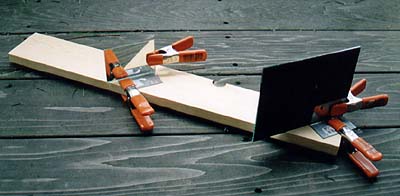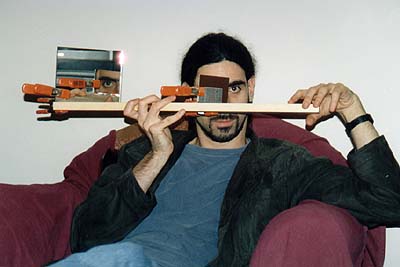Autumn 1999: first prototype and results

The first prototype is basically just a periscope: a pair of mirrors attached to a piece of wood using clamps. What it does is reposition your right eye to be about one foot past the side of your head, effectively increasing your interocular distance by a factor of five.

Of the few dozen people I've shown this to so far, about two thirds of them have a positive experience, saying it makes things look "very small", "very three-dee", or "like a scale model". The best umprompted comment I've gotten so far: "It's so... realistic!"
The rest of the people either can't fuse the images at all and get a headache, or are able to see just fine but don't see what the big deal is. Improving the alignment of the mirrors might help somewhat. But I'm told that some people just don't have stereo vision, so it obviously won't work for everybody even then.

Personally, I find it makes things look small. Anything closer than ten feet is hard to look at and requires crossing your eyes. Things in the 10-1000 foot range look like dollhouse furniture and model train sets. And things in the 1000-5000 foot range start to separate out into planes, when they normally would blend together into a solid backdrop. There's a tower a few blocks from my house that illustrates this nicely.
One problem is that it's not obvious where to put your eyes just from looking at the device. The real one will have to have some kind of little eyecups in front of it, so that it won't need any explanation. Ideally, a five-year-old should be able to walk up to the thing and get a big kick out of it, with or without any grownups around.